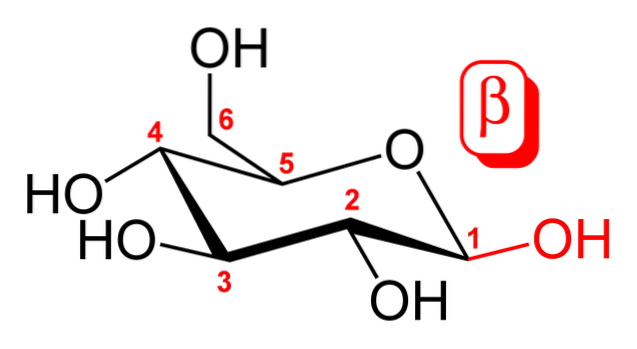
Wave Propagation Velocity Factors and Measurement

The velocity of propagation of a wave is the magnitude that measures the speed at which the wave disturbance propagates along its displacement. The speed at which the wave propagates depends on both the type of wave and the medium through which it propagates..
Logically, a wave that moves through the air is not going to travel at the same speed as one that moves through the land or the sea. Similarly, a seismic wave, sound or light does not advance at the same speed. For example, in a vacuum electromagnetic waves propagate at the speed of light; that is, at 300,000 km / s.

In the case of sound in air, its velocity of propagation is 343 m / s. In general, for mechanical waves, the speed through a material depends mainly on two of the characteristics of the medium: its density and its stiffness. In any case, generally the speed is related to the value of the wavelength and the period.
The relationship can be expressed mathematically through the quotient: v = λ / T, where v is the speed of the wave measured in meters per second, λ is the wavelength measured in meters and T is the period measured in second.
Article index
- 1 How is it measured?
- 2 Factors on which it depends
- 2.1 Velocity of propagation of transverse waves in a string
- 2.2 Velocity of sound propagation
- 2.3 Velocity of propagation of electromagnetic waves
- 3 Solved exercises
- 3.1 First exercise
- 3.2 Second exercise
- 4 References
As measured?
As mentioned above, in general the speed of a wave is determined by its wavelength and its period..
Therefore, since the period and the frequency of a wave are inversely proportional, it can also be stated that the speed depends on the frequency of the wave..
These relationships can be expressed mathematically like this:
v = λ / T = λ ∙ f
In this expression f is the frequency of the wave measured in Hz.
This relationship is just another way of expressing the relationship between speed, space and time: v = s / t, where s represents the space traversed by a moving body.
Therefore, to know the speed at which a wave propagates, it is necessary to know its wavelength and either its period or its frequency. From the above, it is clearly deduced that the speed does not depend on either the energy of the wave or its amplitude..
For example, if you want to measure the speed of propagation of a wave along a rope, you can do it by determining the time it takes for a disturbance to go from one point on the rope to another..
Factors it depends on
Ultimately, the speed of propagation of a wave will depend on both the type of wave and the characteristics of the medium through which it travels. Here are some specific cases.
Velocity of propagation of transverse waves in a string
A very simple and very graphic example to understand what are the factors on which the speed of a wave normally depends is that of the transverse waves that advance along a string.
The following expression allows us to determine the propagation speed for these waves:
v = √ (T / μ)
In this expression μ is the linear density in kilograms per meter and T is the tension of the string.
Sound propagation speed
Sound is a particular case of a mechanical wave; Therefore, it requires a means to be able to move, not being able to do it in a vacuum.
The speed at which sound travels through a material medium will be a function of the characteristics of the medium through which it is transmitted: temperature, density, pressure, humidity, etc..
Sound travels faster in solid-state bodies than in liquids. In the same way, it moves faster in liquids than in gases, which is why it moves faster in water than in air.
Specifically, its speed of propagation in the air is 343 m / s when it is at a temperature of 20 ºC..
Velocity of propagation of electromagnetic waves
Electromagnetic waves, which are a type of transverse waves, propagate through space. Therefore, they do not require a means of movement: they can travel through a void..
Electromagnetic waves travel at about 300,000 km / s (speed of light) although, depending on their speed, they are grouped into frequency ranges composing what is called the electromagnetic spectrum..
Solved exercises
First exercise
Calculate the speed at which a transverse wave travels through a 6 m long rope, if the tension in the rope is 8 N and its total mass is 12 kg.
Solution
The first thing that is necessary to calculate is the linear density of the string:
μ = 12/6 = 2 kg / m
Once this is done, it is possible to determine the speed of propagation, for which it is substituted in the expression:
v = √ (T / μ) = √ (8/2) = 2 m / s
Second exercise
It is known that the frequency of the musical note is 440 Hz. Determine what its wavelength is both in air and in water, knowing that in air its velocity of propagation is 340 m / s, while in air water reaches 1400 m / s.

Solution
To calculate the wavelength we solve for λ from the following expression:
v = λ ∙ f
Is obtained: λ = v / f
Substituting the statement data, the following results are reached:
λ air = 340/440 = 0.773 m
λ Water = 1400/440 = 3.27 m
References
- Wave (n.d.). On Wikipedia. Retrieved on May 19, 2018, from es.wikipedia.org.
- Phase velocity (n.d.). On Wikipedia. Retrieved on May 19, 2018, from en.wikipedia.org.
- Speed of sound (n.d.). On Wikipedia. Retrieved on May 19, 2018, from en.wikipedia.org.
- Fidalgo Sánchez, José Antonio (2005). Physics and chemistry. Everest
- David C. Cassidy, Gerald James Holton, Floyd James Rutherford (2002). Understanding physics. Birkhäuser.
- French, A.P. (1971). Vibrations and Waves (M.I.T. Introductory physics series). Nelson thornes.
- Crawford jr., Frank S. (1968). Waves (Berkeley Physics Course, Vol. 3), McGraw-Hill.




Yet No Comments